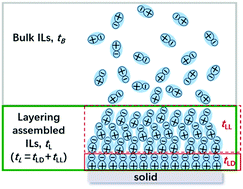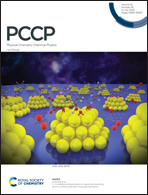Controlling the nanoscale friction by layered ionic liquid films†
Abstract
The nanofriction coefficient of ionic liquids (ILs), 1-butyl-3-methylimidazolium tetrafluoroborate ([BMIM][BF4]) and 1-butyl-3-methylimidazolium hexafluorophosphate ([BMIM][PF6]), on the surfaces of mica and graphite was investigated using atomic force microscopy (AFM). A pronounced layered spatial distribution was found in the IL film formed on the solid substrates and can be divided into 3 well distinguishable regions exhibiting different physical properties with increasing distance from the substrate. We found that the friction coefficient (μ) increases monotonically as the layering thickness decreases, no matter what the thickness of the bulk IL is. This suggests that the layering assembled IL at solid surfaces is more important than the bulk phase in determining the magnitude of the nanoscale friction. The increase in the friction coefficient as the layering thickness decreases is most likely attributed to the assembled ordered IL layers closer to the substrate surfaces having a greater activation barrier for unlocking the surfaces to allow shear.



 Please wait while we load your content...
Please wait while we load your content...